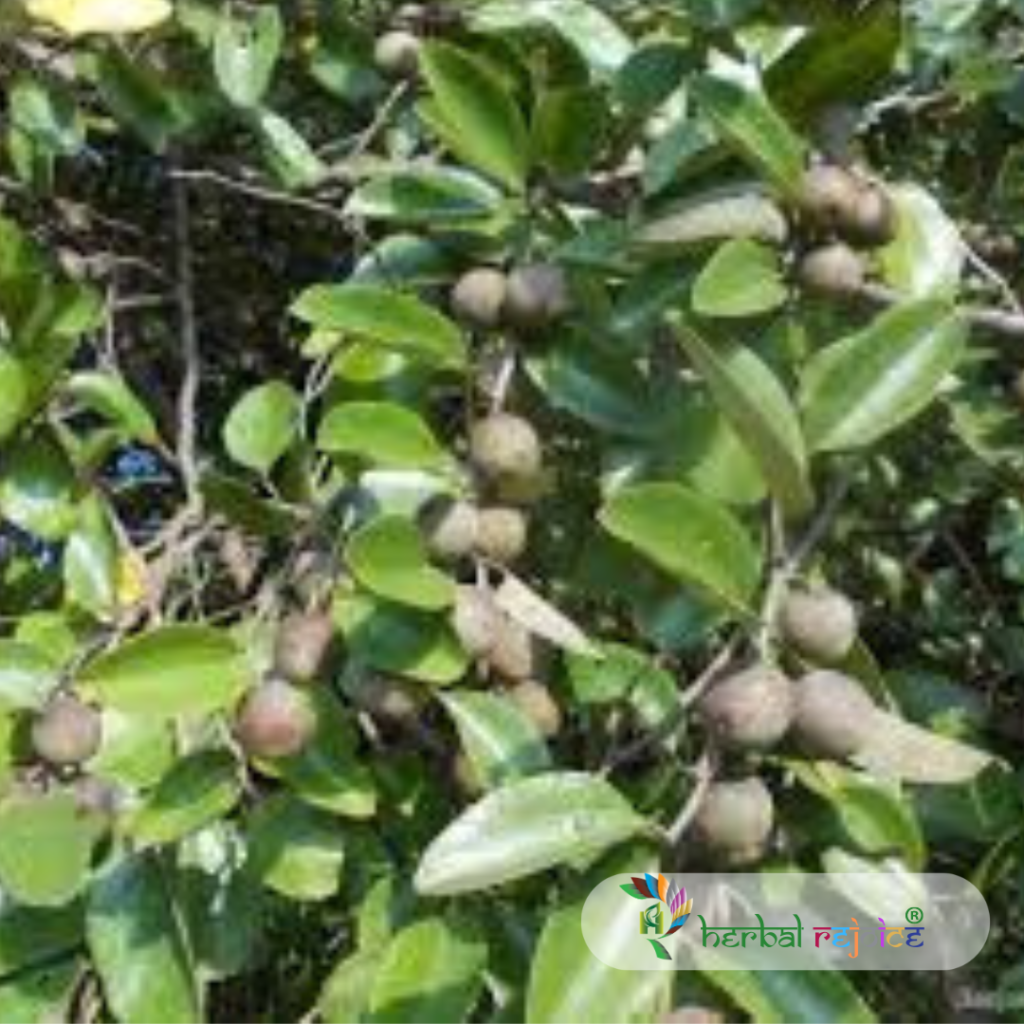Introduction:
Ziziphus xylopyra Willd., commonly known as Ghontaa or Ghonta-Phala, belongs to the Rhamnaceae family. This tree is predominantly found in the Lac host regions of Madhya Pradesh, Uttar Pradesh, and Punjab, and is highly valued for its medicinal properties. In Ayurveda, it is known for its ability to yield Rangeeni lac, an important herbal product. This article explores the various medicinal properties and benefits of Ziziphus xylopyra Willd., shedding light on its rich phytochemical composition and traditional uses.
Medicinal Properties:
Ziziphus xylopyra Willd. exhibits potent astringent properties. The fruit of this tree is rich in catechol-type tannins, consisting of 8-12% tannins. On the other hand, the bark contains 7.2% tannins. These tannins are responsible for its astringent actions in the body. Additionally, the alcoholic extract derived from the bark of Ziziphus xylopyra Willd. possesses remarkable anti-nociceptive, anti-convulsant, and anti-inflammatory properties.

Phytochemical Composition:
Ziziphus xylopyra Willd. contains alkaloids, specifically amphibine H and nummularine K. These alkaloids have been found to exhibit significant antimicrobial activity. This highlights the potential of Ziziphus xylopyra Willd. as a natural antimicrobial agent.
Host Plant for Laccifer Sp.:
Ziziphus xylopyra Willd. serves as the host plant for Laccifer sp., specifically L. indicola Kapur (synonym L. indica Misra) and L. jhansiensis Misra. This crucial relationship between Ziziphus xylopyra Willd. and Laccifer sp. reveals the interconnectedness and ecological importance of these species. Laccifer sp. is known for producing lac, a valuable product used in various applications.
Traditional Uses:
Lac, obtained from Ziziphus xylopyra Willd., possesses styptic properties and has been traditionally used to treat haematemesis (bleeding disorders). Furthermore, it has been employed for promoting tissue regeneration and wound healing. In dental care, lac has been applied to treat cavities and diseased teeth.
Conclusion:
Ziziphus xylopyra Willd., commonly known as Ghontaa or Ghonta-Phala, is a powerful medicinal tree with impressive healing properties. Its fruit and bark contain valuable compounds such as catechol-type tannins and alkaloids, contributing to its astringent, antimicrobial, and anti-inflammatory actions. Additionally, its relationship with Laccifer sp. showcases the ecological significance of Ziziphus xylopyra Willd. Furthermore, lac derived from this tree has been used for various therapeutic purposes, including the treatment of bleeding disorders and dental ailments. With its rich medicinal profile, Ziziphus xylopyra Willd. holds great potential for further exploration and utilization in the field of natural medicine.
Frequently Asked Questions
What is Trichosanthes bracteata?
It’s a medicinal plant known for its anti-inflammatory and antiasthmatic properties.
What are other names for Trichosanthes bracteata?
It’s also known as “Thikkam” in Tamil, “Pathra” in Ayurveda, and “Vitham” in Siddha.
What are the main medicinal uses of Trichosanthes bracteata?
It’s used to treat respiratory issues and reduce inflammation.
Which compounds are found in Trichosanthes bracteata?
Key compounds include trichotetrol, cyclotrichosantol, and cycloeucalenol.
How does Trichosanthes bracteata benefit respiratory health?
Its antiasthmatic properties help in alleviating asthma symptoms and other respiratory issues.
Can Trichosanthes bracteata be used for anti-inflammatory purposes?
Yes, it is effective in reducing inflammation in various conditions.
Is Trichosanthes bracteata used in traditional medicine?
Yes, it has a long history of use in Ayurveda, Siddha, and Tamil traditional medicine.
What is the scientific classification of Trichosanthes bracteata?
It belongs to the Cucurbitaceae family.
How is Trichosanthes bracteata typically administered?
It is often used in the form of decoctions, powders, or extracts.
Are there any known side effects of Trichosanthes bracteata?
It is generally safe when used appropriately, but consult a healthcare provider for personalized advice.
Can Trichosanthes bracteata be used for chronic conditions?
Yes, it is used for chronic inflammatory and respiratory conditions.
What part of the plant is used for medicinal purposes?
Various parts, including the root, stem, and leaves, are utilized.
How should Trichosanthes bracteata be stored?
Store in a cool, dry place away from direct sunlight.
Is Trichosanthes bracteata effective against allergies?
It can help reduce allergic reactions due to its anti-inflammatory properties.
Where can I find Trichosanthes bracteata products?
It can be found in herbal shops or online specialty stores.
How long does it take to see results from using Trichosanthes bracteata?
Results can vary, but benefits may be noticed within a few weeks of regular use.


